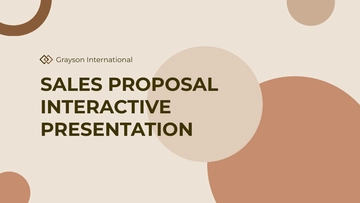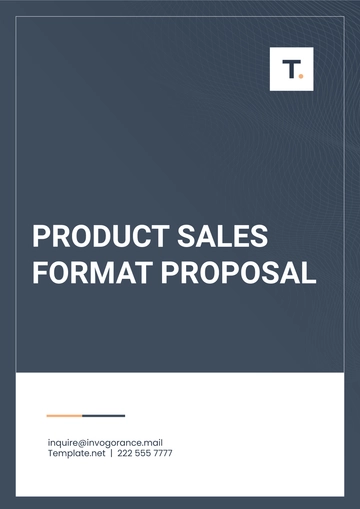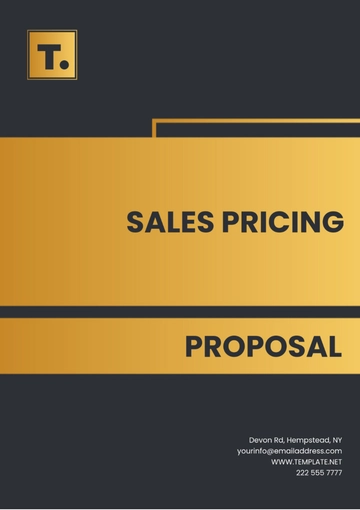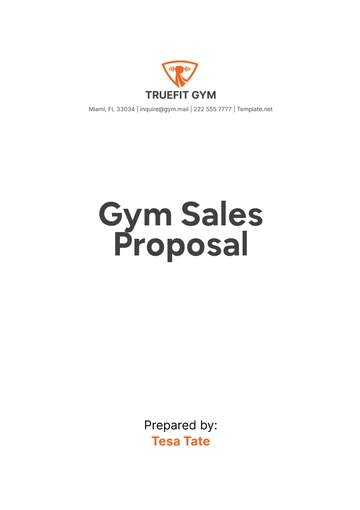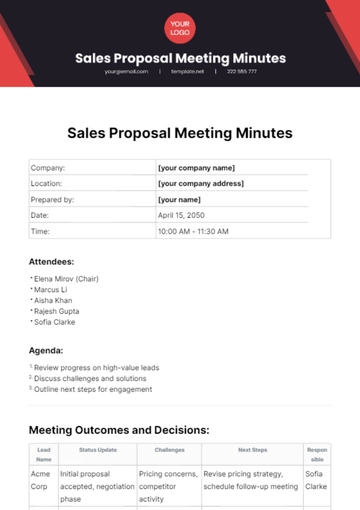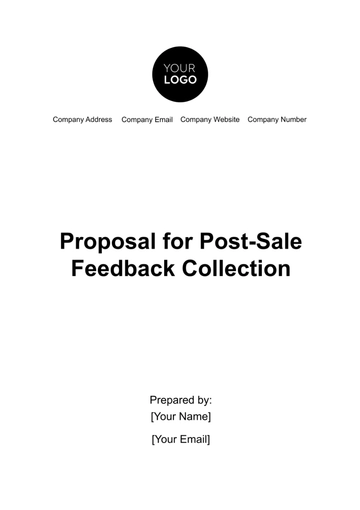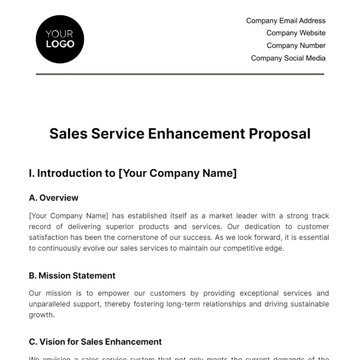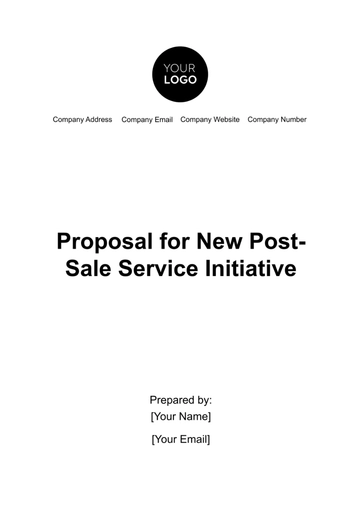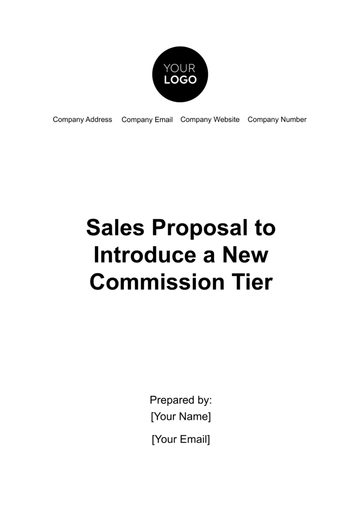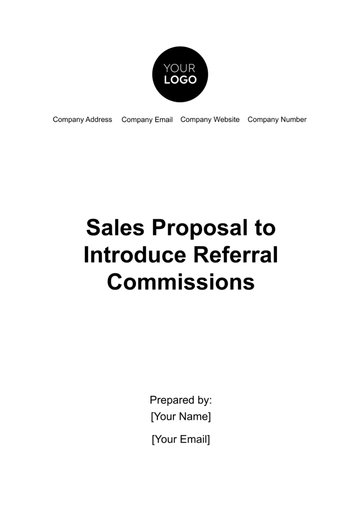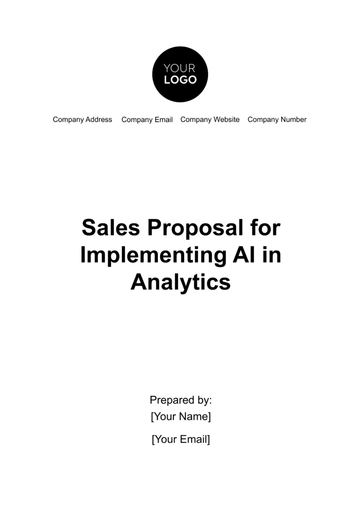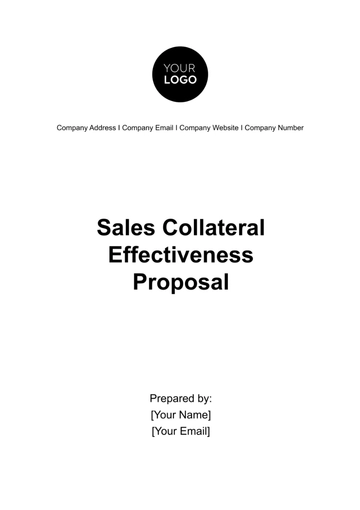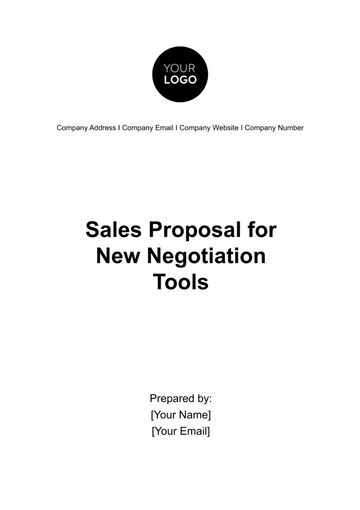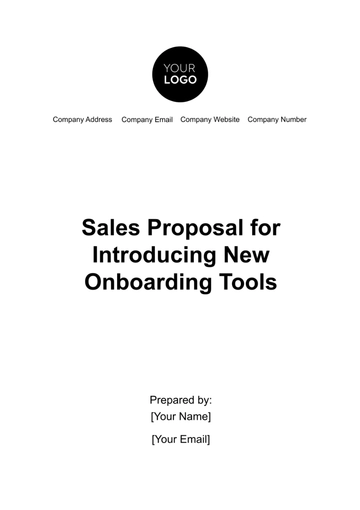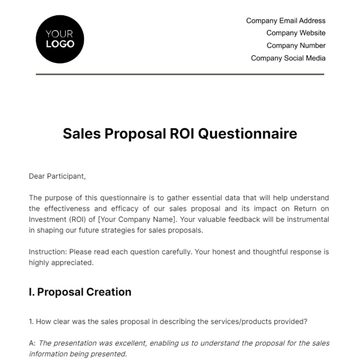Free Sales Strategic Client Retention Proposal
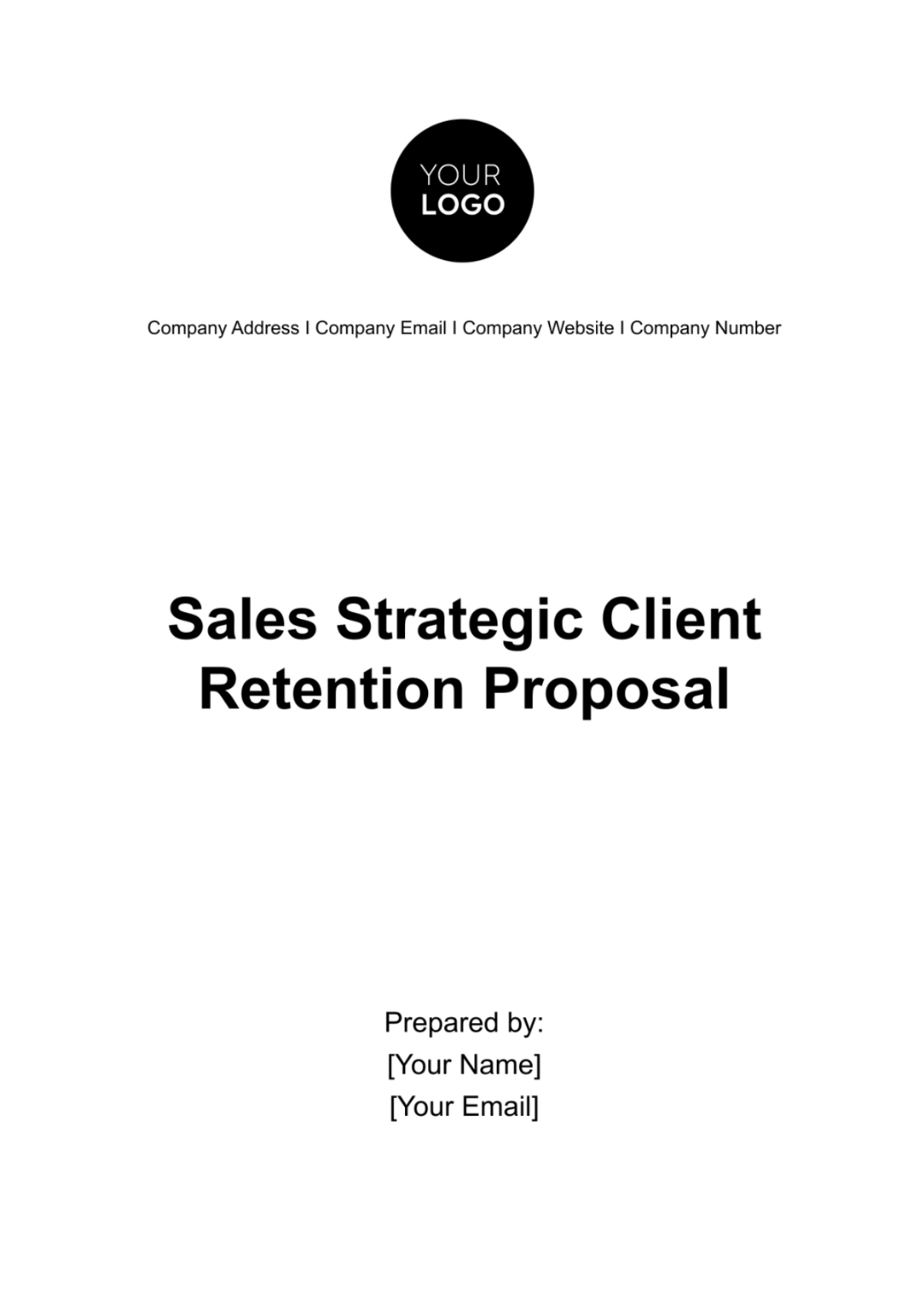
Executive Summary
Objective:
The objective of this proposal is to outline a comprehensive strategy for retaining clients and enhancing their loyalty to[Your Company Name]. By implementing this strategy, we aim to increase customer retention rates, boost average customer spending, and improve overall customer satisfaction.
Background:
[Your Company Name] is a well-established player in the fashion industry, known for its high-quality clothing and diverse customer base. In the face of growing competition, retaining existing clients has become increasingly important. Loyal customers not only contribute significantly to revenue but also serve as brand advocates, helping to attract new clients.
Key Strategies:
Client Segmentation: We propose segmenting our client base to create tailored marketing strategies for different customer groups, ensuring more personalized interactions.
Personalization: Utilizing client data to personalize shopping experiences, recommend products, and offer exclusive promotions.
Loyalty Programs: Introducing a tiered loyalty program to incentivize repeat purchases, referrals, and engagement.
Feedback Mechanism: Establishing an efficient feedback system to gather customer input and continuously improve our products and services.
Sales and Marketing: Enhancing cross-selling and upselling efforts, creating engaging content, implementing targeted email marketing, and boosting social media engagement.
Customer Service and Support: Providing exceptional customer support through multiple channels, simplifying returns and exchanges, and implementing post-purchase engagement strategies.
Monitoring and Reporting: We will closely monitor key performance indicators (KPIs), including customer retention rates, average order value, Net Promoter Score (NPS), and customer feedback metrics. Data analytics will be utilized to gain insights into customer behavior and preferences, facilitating data-driven decision-making.
Budget and Resources: Allocation of a budget for the implementation of the proposed strategies, encompassing technology investments, marketing campaigns, staff training, and customer support enhancements.
In conclusion, this Sales Strategic Client Retention Proposal represents a comprehensive approach to securing the loyalty and satisfaction of[Your Company Name]'s clients. By executing these initiatives, we not only aim to retain valued customers but also drive growth and success in a competitive market. We invite further discussion and collaboration to bring this proposal to fruition and build stronger, lasting relationships with our clients, ensuring a bright future for[Your Company Name].
Introduction
In an ever-evolving and highly competitive landscape within the fashion industry,[Your Company Name] recognizes the paramount importance of client retention as a cornerstone of its continued success and growth. This Sales Strategic Client Retention Proposal is designed to articulate our comprehensive approach to retaining valued clients and bolstering their loyalty to our brand.
Background:
[Your Company Name]stands as a prominent and well-established entity in the fashion sector. Over the years, we have meticulously curated our offerings, providing high-quality clothing that resonates with a diverse clientele. Our commitment to excellence has not only solidified our presence in the market but has also garnered a loyal following of clients who appreciate our products, style, and service.
The contemporary business environment, marked by fierce competition and rapidly changing consumer preferences, necessitates a proactive stance towards retaining existing clients. We acknowledge that clients who maintain a lasting relationship with our brand are not only valuable in terms of their ongoing patronage but also serve as advocates who can influence others to join our community.
Objective
The primary objective of this proposal is to present a structured and strategic plan for cultivating enduring client relationships that benefit both[Your Company Name] and our valued clients. Our overarching goals are as follows:
Increase Customer Retention Rates: Over the next 12 months, we aim to enhance our customer retention rates by a target increase of 5%. Retaining clients is not only more cost-effective than acquiring new ones but also fosters a sense of brand loyalty and trust.
Boost Average Customer Spending: We aspire to increase the average amount our clients spend with each transaction by a target growth rate of Y%. Achieving this will be accomplished through strategic upselling and cross-selling efforts, demonstrating the value and versatility of our product range.
Enhance Customer Satisfaction and Loyalty: We intend to elevate customer satisfaction levels, as evidenced by improvements in our Net Promoter Score (NPS). Our goal is to create memorable experiences that solidify our position as the preferred choice for fashion-conscious individuals.
Client Retention Strategy
Client Segmentation
Client segmentation is a foundational element of our Client Retention Strategy. It involves categorizing our client base into distinct segments based on various criteria, including purchase history, preferences, demographics, and behavioral patterns. This segmentation allows us to tailor our marketing and communication efforts to meet the specific needs and preferences of each client group.
Key Elements of Client Segmentation:
Demographic Segmentation: Dividing clients by age, gender, location, and income level to create targeted marketing campaigns that resonate with each group.
Behavioral Segmentation: Analyzing client behavior, such as purchase frequency, average order value, and browsing habits, to identify and reward high-value and loyal clients.
Psychographic Segmentation: Understanding client lifestyles, values, and interests to craft personalized messaging that aligns with their preferences.
Benefits of Client Segmentation:
Personalization: By understanding the unique characteristics of each segment, we can create tailored marketing messages, product recommendations, and incentives that are more likely to resonate with individual clients.
Efficiency: Segmentation allows us to allocate resources more efficiently by focusing marketing efforts on the segments with the highest potential for growth and retention.
Retention and Loyalty: Clients are more likely to remain engaged with the brand when they feel understood and catered to on a personal level.
Personalization
Personalization is a central component of our strategy, aimed at creating a unique and relevant experience for each client. Leveraging client data and insights gathered through segmentation, we will implement the following personalization initiatives:
Key Elements of Personalization:
Product Recommendations: Implementing recommendation algorithms to suggest products based on a client's past purchase history and browsing behavior.
Tailored Email Marketing: Crafting personalized email campaigns that deliver relevant content, product recommendations, and exclusive offers based on client preferences.
Dynamic Website Content: Customizing the online shopping experience by displaying products and content that align with a client's interests and behavior.
Personalized Communications: Ensuring that all client interactions, whether through chat support or social media, reflect an understanding of the client's preferences and history with the brand.
Sales and Marketing
Our Sales and Marketing strategy is a pivotal component of our client retention efforts. By effectively engaging clients and showcasing the value and versatility of our products, we aim to not only retain them but also increase their spending. Here are the key elements of our strategy:
Cross-Selling and Upselling
Cross-selling and upselling are techniques used to encourage clients to purchase additional products or higher-value items. By employing these strategies effectively, we can maximize the value of each transaction and strengthen client loyalty.
Key Elements of Cross-Selling and Upselling:
Product Bundles: Offer product bundles that include complementary items, enticing clients to purchase more while saving on the overall cost.
Product Recommendations: Utilize client data and browsing history to recommend related or upgraded products during the shopping journey.
Add-Ons and Accessories: Suggest relevant accessories or add-on items that enhance the value and utility of the main purchase.
Tiered Pricing: Present tiered pricing options, such as "Basic," "Premium," and "Ultimate," offering progressively more features or benefits.
Loyalty Program Integration: Integrate loyalty program perks, such as exclusive discounts or points earning opportunities, to incentivize clients to upgrade or purchase additional items.
Content Marketing
Content marketing is a powerful tool for engaging clients, building brand authority, and retaining their interest. We will create valuable, informative, and entertaining content that resonates with our target audience.
Key Elements of Content Marketing:
Fashion Tips and Guides: Regularly publish fashion tips, styling guides, and trend analyses to help clients make informed purchasing decisions and stay updated on the latest fashion trends.
Storytelling: Share compelling brand stories, behind-the-scenes content, and client testimonials to create a strong emotional connection between our clients and the brand.
User-Generated Content: Encourage clients to share their own content featuring our products on social media, which we can then showcase on our website and social channels.
Educational Content: Offer educational resources about the materials, production processes, and sustainability practices behind our products to demonstrate our commitment to quality and ethics.
Email Newsletters: Send regular newsletters that provide value through curated content, exclusive offers, and personalized product recommendations.
Customer Service and Support
Exceptional customer service and support are crucial components of our client retention strategy. By providing clients with a seamless and satisfying experience throughout their journey with[Your Company Name], we aim to strengthen their loyalty and satisfaction.
Enhanced Support
Enhanced support entails going above and beyond to address client inquiries, concerns, and issues promptly and effectively. Our approach is centered on providing a consistently high level of service across all communication channels.
Key Elements of Enhanced Support:
Multi-Channel Accessibility: Offer support through various channels, including live chat, phone, email, and social media, ensuring clients can reach us through their preferred method.
Trained Support Team: Invest in comprehensive training for our support team to equip them with the knowledge and skills necessary to assist clients efficiently and courteously.
24/7 Availability: Provide round-the-clock support for urgent issues, ensuring clients can reach us at any time.
Personalized Interactions: Utilize client data to personalize interactions, addressing clients by name and referencing their past interactions or purchases.
Proactive Outreach: Anticipate and address potential issues before they become significant concerns by proactively reaching out to clients with solutions.
Returns and Exchanges
Simplifying the returns and exchanges process is essential for client satisfaction and retention. We will make it as hassle-free and convenient as possible while using these interactions as opportunities to further enhance the client experience.
Key Elements of Returns and Exchanges:
Clear Return Policies: Maintain transparent and easy-to-understand return and exchange policies, clearly outlining the process and timeframes.
User-Friendly Portal: Develop an intuitive online portal where clients can initiate returns or exchanges, track progress, and print return labels.
Speedy Processing: Aim for quick processing of returns and exchanges, issuing refunds or replacements promptly upon receiving returned items.
Communication: Keep clients informed throughout the return or exchange process, providing updates via email or SMS.
Feedback Gathering: Gather feedback from clients who initiate returns or exchanges to identify areas for improvement.
Post-Purchase Engagement
Engaging clients after a purchase is crucial for maintaining a connection and ensuring they remain satisfied with their purchases. Post-purchase engagement initiatives will foster lasting relationships and brand loyalty.
Key Elements of Post-Purchase Engagement:
Thank-You Notes: Send personalized thank-you notes or emails expressing gratitude for the client's purchase.
Follow-Up Emails: Reach out to clients a few weeks after their purchase to check on their satisfaction, offer assistance, and gather feedback.
Surveys and Reviews: Encourage clients to provide feedback through surveys and reviews, incentivizing them with discounts or loyalty points.
Reorder Reminders: Send reminders when it's time for clients to replenish items they've purchased regularly.
Exclusive Offers: Provide exclusive discounts or early access to new collections as a token of appreciation for their loyalty.
Key Performance Indicators (KPIs)
To assess and track the success of our client retention efforts, we will establish a set of Key Performance Indicators (KPIs) that provide valuable insights into our performance. These KPIs will serve as quantifiable metrics to measure progress and guide decision-making. Here are the key KPIs we will focus on:
Customer Retention Rate
Definition: The percentage of clients who continue to make purchases from[Your Company Name] over a specified period.
Calculation: (Number of clients at the end of the period - Number of new clients acquired during the period) / Number of clients at the start of the period) x 100.
Importance: A higher retention rate signifies successful client retention efforts.
Data Analytics
Leveraging data analytics is crucial for gaining actionable insights into customer behavior, preferences, and trends. This data-driven approach empowers[Your Company Name] to make informed decisions, optimize processes, and tailor client retention strategies effectively.
Conclusion
In conclusion, this Sales Strategic Client Retention Proposal outlines a comprehensive strategy designed to ensure the long-term loyalty and satisfaction of[Your Company Name]'s valued clients. We understand the significance of retaining existing clients in today's competitive fashion industry, and our objective is to create lasting relationships that benefit both our clients and our brand.
Throughout this proposal, we have articulated key elements of our client retention strategy, including client segmentation, personalization, loyalty programs, enhanced support, returns and exchanges, post-purchase engagement, and data-driven decision-making through data analytics. These components collectively form a robust framework aimed at achieving the following objectives:
Increasing Customer Retention Rates.
Boosting Average Order Value (AOV).
Enhancing Client Satisfaction and Loyalty, measured by Net Promoter Score (NPS) and client feedback metrics.
We have emphasized the importance of personalization in all client interactions, making our clients feel valued and understood. Furthermore, our loyalty programs will reward clients for their loyalty and engagement, fostering lasting relationships.
Our commitment to exceptional customer service and support includes enhanced support services available through various channels, a streamlined returns and exchanges process, and post-purchase engagement initiatives aimed at keeping clients engaged and satisfied beyond their initial purchase.
To measure the success of our client retention efforts, we will closely monitor Key Performance Indicators (KPIs) such as Customer Retention Rate, AOV, NPS, and customer feedback metrics. Additionally, we will harness the power of data analytics to gain insights into customer behavior, preferences, and trends, ensuring data-driven decision-making and optimization of our strategies.
[Your Company Name]is dedicated to the pursuit of strong, enduring client relationships that transcend mere transactions. By implementing the initiatives outlined in this proposal, we aim to not only retain our valued clients but also drive growth, increase revenue, and solidify our position as a customer-centric brand in the fashion industry.
We look forward to further discussions and collaborative efforts to bring this proposal to fruition. Together, we will build stronger, lasting relationships with our clients and secure a prosperous future for[Your Company Name].
- 100% Customizable, free editor
- Access 1 Million+ Templates, photo’s & graphics
- Download or share as a template
- Click and replace photos, graphics, text, backgrounds
- Resize, crop, AI write & more
- Access advanced editor
Maximize client loyalty with the Sales Strategic Client Retention Proposal Template from Template.net. This editable and customizable template empowers you to craft compelling retention strategies. Enhance your proposal with our Ai Editor Tool, making every detail perfectly aligned with your unique retention goals.
You may also like
- Business Proposal
- Research Proposal
- Proposal Request
- Project Proposal
- Grant Proposal
- Photography Proposal
- Job Proposal
- Budget Proposal
- Marketing Proposal
- Branding Proposal
- Advertising Proposal
- Sales Proposal
- Startup Proposal
- Event Proposal
- Creative Proposal
- Restaurant Proposal
- Blank Proposal
- One Page Proposal
- Proposal Report
- IT Proposal
- Non Profit Proposal
- Training Proposal
- Construction Proposal
- School Proposal
- Cleaning Proposal
- Contract Proposal
- HR Proposal
- Travel Agency Proposal
- Small Business Proposal
- Investment Proposal
- Bid Proposal
- Retail Business Proposal
- Sponsorship Proposal
- Academic Proposal
- Partnership Proposal
- Work Proposal
- Agency Proposal
- University Proposal
- Accounting Proposal
- Real Estate Proposal
- Hotel Proposal
- Product Proposal
- Advertising Agency Proposal
- Development Proposal
- Loan Proposal
- Website Proposal
- Nursing Home Proposal
- Financial Proposal
- Salon Proposal
- Freelancer Proposal
- Funding Proposal
- Work from Home Proposal
- Company Proposal
- Consulting Proposal
- Educational Proposal
- Construction Bid Proposal
- Interior Design Proposal
- New Product Proposal
- Sports Proposal
- Corporate Proposal
- Food Proposal
- Property Proposal
- Maintenance Proposal
- Purchase Proposal
- Rental Proposal
- Recruitment Proposal
- Social Media Proposal
- Travel Proposal
- Trip Proposal
- Software Proposal
- Conference Proposal
- Graphic Design Proposal
- Law Firm Proposal
- Medical Proposal
- Music Proposal
- Pricing Proposal
- SEO Proposal
- Strategy Proposal
- Technical Proposal
- Coaching Proposal
- Ecommerce Proposal
- Fundraising Proposal
- Landscaping Proposal
- Charity Proposal
- Contractor Proposal
- Exhibition Proposal
- Art Proposal
- Mobile Proposal
- Equipment Proposal
- Student Proposal
- Engineering Proposal
- Business Proposal
